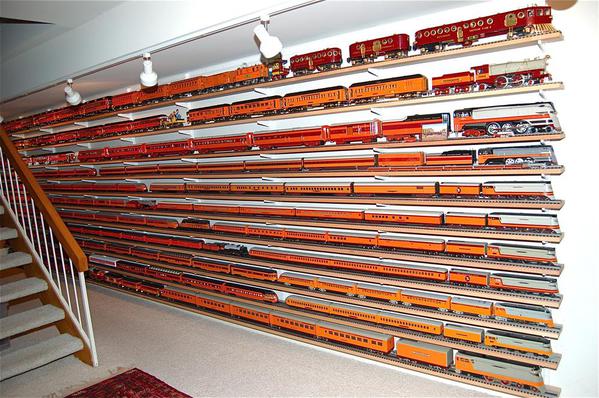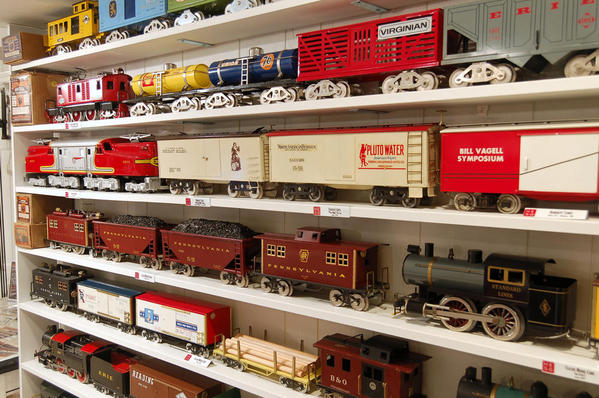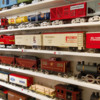Like hojack, I use vertical "standards" (mine are "hanging" ones), with brackets to mount my shelves. Yes, the brackets get in the way occasionally but with my "hanging" standards I was able to make quick and simple adjustments to either standard and/or shelf spacing to overcome every problem I encountered. This capability was a real benefit for my "growing" collection of Milwaukee Road trains, which now includes a variety of both large and small trains in numerous gauges and scales.
First and foremost, with my "hanging" standard system I only had to drill one set of holes on each of the walls over which I would "hang" shelving. These holes were used to physically attach to each wall the horizontal "hanging" rod/bracket from which I would then hang the vertical standards. In my case, I attached the hanging rod/bracket just below the ceiling on several walls. From this horizontal rod/bracket I then hung vertically several standards spaced at intervals ranging between 3' to 4' along the wall wherever I thought they were needed to support the wooden shelves. However, since the standards were hung from the rod/bracket and not attached to the wall, I could and did occasionally make quick adjustments to each standard's location by simply sliding it along the hanging rod/bracket.
I then quickly clipped the brackets into the hanging standards at the shelf spacing I desired. Since each bracket was not attached to the wall, I could and did make changes to their interval up or down the standards to adjust the spacing between shelves. To do this, I simply unclipped the brackets from the hanging standards and then clipping them back into the standards either higher up or lower down as needed.
The above and other quick and simple adjustments can't be done with shelving systems, which physically attach each shelf, bracket, and/or standard to the wall. Needless to say, I came to really appreciate the "flexibility" inherent in the hanging standard shelving system as my collection of trains grew over time requiring me to make several quick and simple adjustments to the spacing of shelves and/or brackets in order to accommodate more or larger or smaller trains.
Bob Nelson












